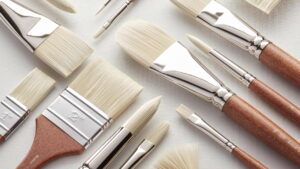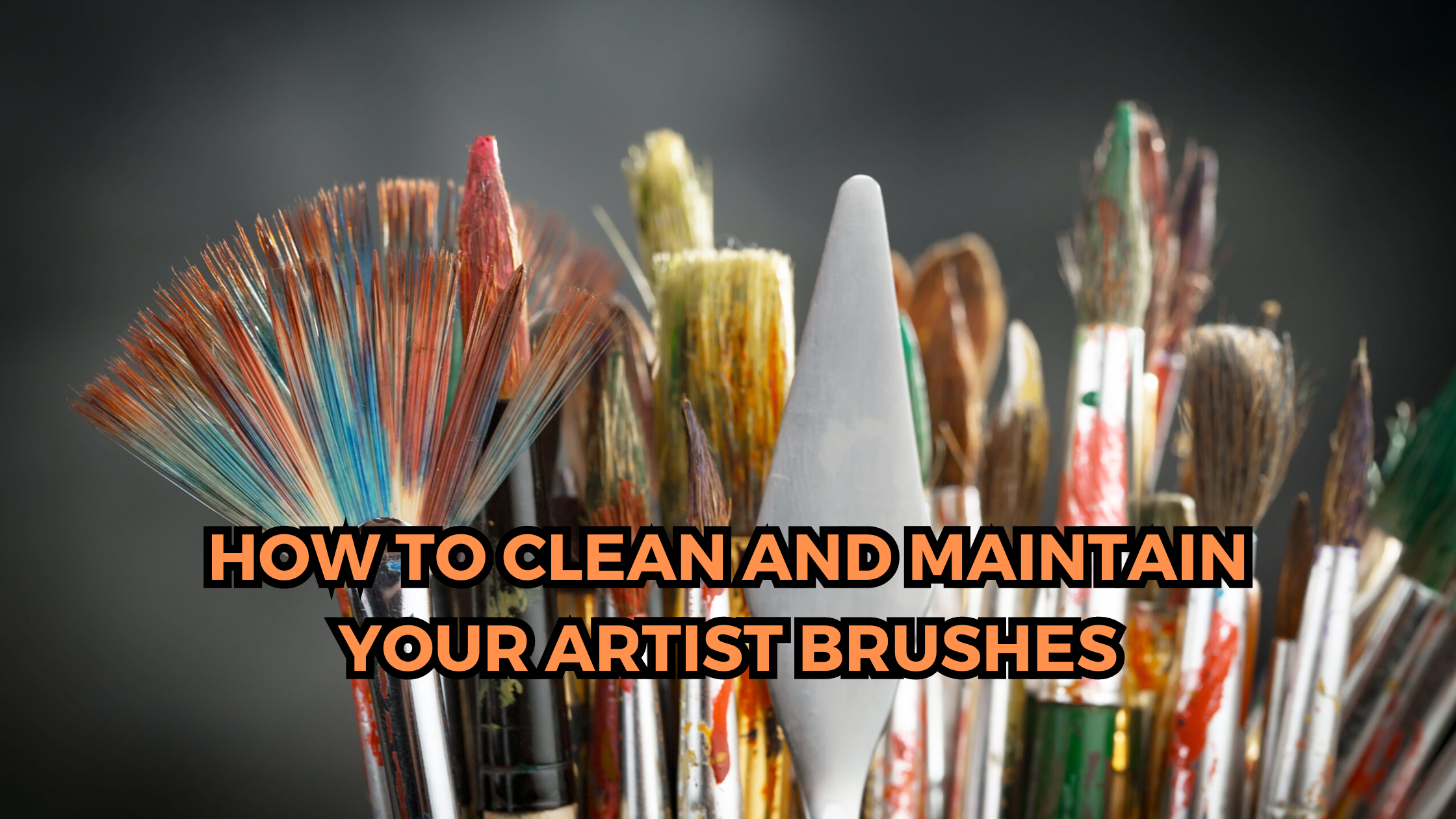As an artist with a decade of experience, I’ve learned the importance of well-maintained brushes in the creation of beautiful artwork. Brushes are more than just tools; they are an extension of your imagination. In this blog post, I’ll walk you through the fundamentals of brush care, sharing tips on how to clean and maintain your artist brushes so they can be faithful companions on your artistic journey.

The Fundamentals of Brush Care
1. Cleaning After Every Use
Cleaning your brushes after each use is a fundamental rule of brush care. Allowing paint to dry on your bristles can cause damage and reduce the quality of your strokes. Begin by wiping away excess paint with a paper towel. Rinse the brush under warm water, gently massaging the bristles to remove any remaining pigment from water-based paints. Consider using a solvent appropriate for the type of paint, such as mineral spirits for oil paints, if you’re using oil-based paints.
2. Choosing the Best Cleaning Agents
Cleaning agents for various paints are required. Mild soap and water are usually sufficient for cleaning acrylic and watercolor brushes. Oil paints, on the other hand, necessitate a little more care. To effectively remove the stubborn pigments without harming the bristles, invest in a good quality brush cleaner designed for oil-based paints.
3. Gentle Strokes for Gentle Brushes
Always use gentle strokes when cleaning your brushes. Scrubbing too hard can damage the bristles, causing fraying and loss of shape. Work the cleaning agent through the bristles in the direction of the natural shape of the brush. This ensures thorough cleaning while minimizing stress on the bristles.
Maintaining Brush Shape

1. Reshaping Wet Brushes
Your brush’s shape is critical for achieving the desired strokes in your artwork. Reshape the brush while it’s still wet after cleaning. Mold the bristles back into their original shape with your fingers. To maintain the shape of the bristles as they dry, use a brush shaper or wrap them in a piece of paper.
2. Avoiding Excessive Water Exposure
While water is necessary for cleaning brushes, too much of it can be harmful. Soaking for an extended period can cause the wooden handle to swell and the metal ferrule to loosen. Water can also weaken the glue that holds the bristles together. To avoid this, keep your brushes out of water as much as possible and store them in a way that allows proper air circulation to aid drying.
3. Investing in High-Quality Brushes
The longevity of your brushes is frequently determined by their initial quality. Investing in high-quality brushes may be more expensive at first, but it will pay off in the long run. Quality brushes last longer, retain their shape better and are easier to clean. Consider it an investment in your artistic endeavors.
Brush Bristle Preservation

1. Proper Drying Techniques
Allow your brushes to dry completely before storing them after cleaning. To prevent water from entering the ferrule, make sure the bristles are pointing downward. Drying your brushes by hanging them or laying them flat on a clean surface are both effective methods. Standing wet brushes upright can cause water to accumulate in the ferrule, causing damage over time.
2. Avoiding heat and sunlight
Excessive heat or direct sunlight can be harmful to your brushes. Heat can make the bristles brittle, and prolonged sun exposure can fade the color of the brush handle and weaken the glue that holds the bristles in place. To maintain the quality of your brushes, keep them in a cool, dry place away from direct sunlight.
Identifying and Resolving Common Brush Problems
1. Dealing with Difficult Stains
Brushes can sometimes retain stubborn stains despite your best efforts. A vinegar and water solution can be used to clean acrylic and watercolor brushes. Consider using a specialized brush cleaner or a mixture of mild soap and oil to remove oil paint stains.
2. Restoring Dry and Stiff Bristles
There’s still hope if you’ve neglected your brushes and the bristles have become dry and stiff. Soak the bristles for a few hours in a mixture of fabric softener and water. This will soften the bristles and make them more pliable. After soaking, thoroughly rinse the brush and reshape the bristles.
Conclusion
Caring for your artist brushes is more than just a practical necessity; it also reflects your dedication to your craft. By incorporating these brush care practices into your routine, you will not only preserve your tools, but you will also improve your ability to express your artistic vision. Treat your brushes with the same care and respect that you do your artwork, and you’ll find that they’ll be dependable collaborators in your creative endeavors for years to come.
Some Best Brushes For Artist:
1. Sabahz Trading Round Pointed Tip Artist Paint Brushes – Link
2. ARTIOS Flat Paint Brushes – Link
3. ARTIOS Filbert Paint Brushes – Link
4. ARTIOS Angular Paint Brushes – Link
Read Also:- Understanding Brush Bristles: Natural vs. Synthetic Fibers
To learn more about art, visit SILPAVAT.IN


